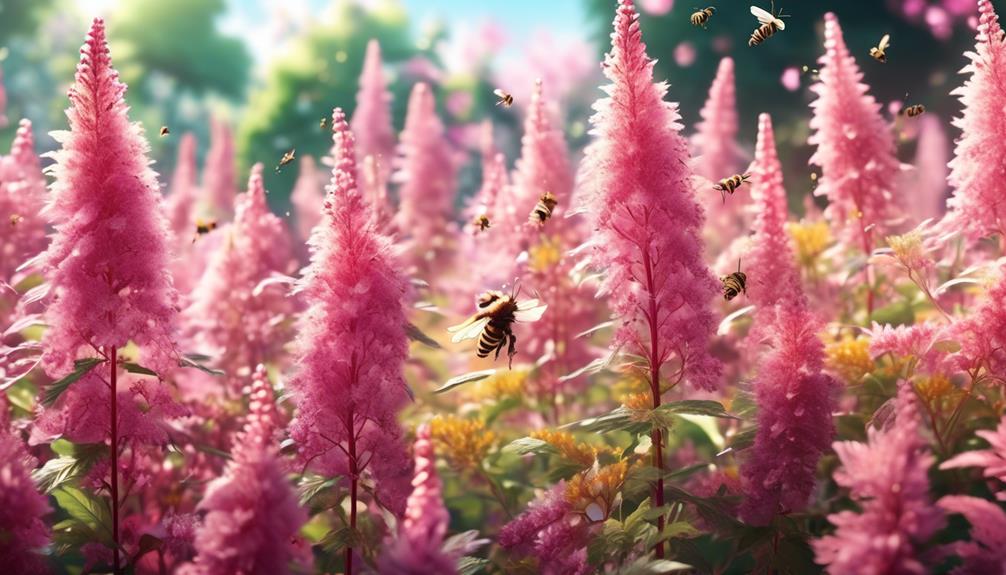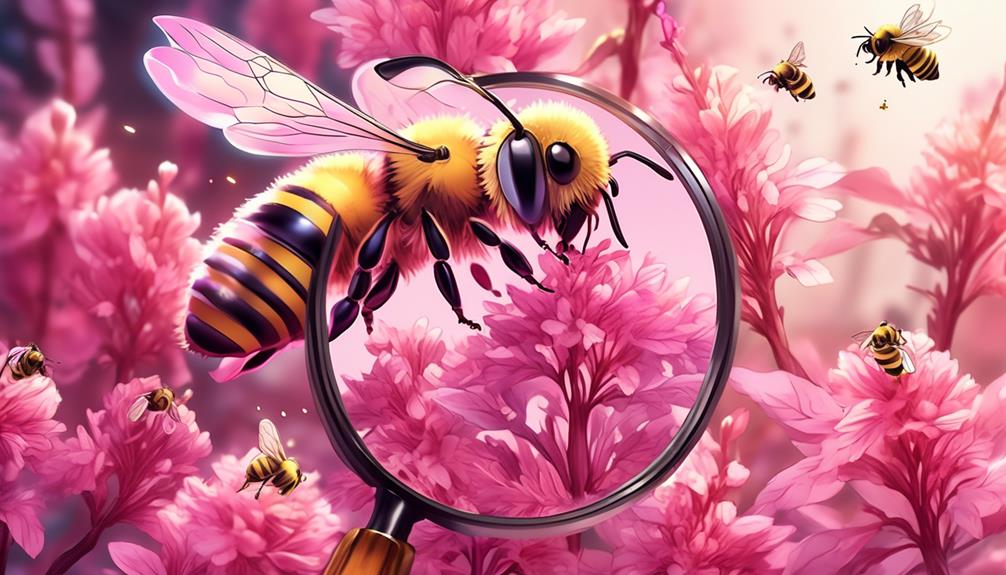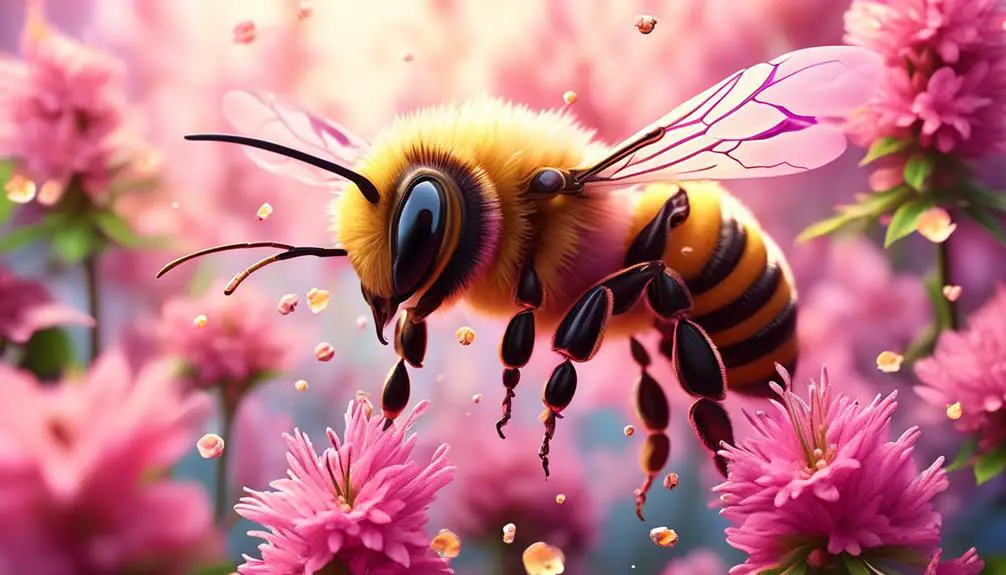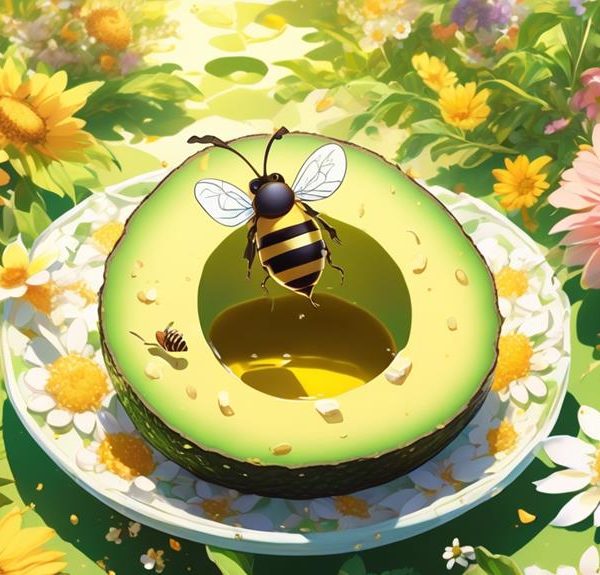Dive into the investigation of whether bees are drawn to the captivating Astilbe flowers, a mystery waiting to be unraveled.

Do Bees Like Astilbe
Like a detective sifting through clues, you're likely trying to discern whether bees have a fondness for Astilbe. Astilbe, a perennial flower known for its feathery, plumelike blooms and fern-like foliage, is a common sight in many gardens. It's a question that's likely sprung from your observations or plans for your own garden, or perhaps your interest in the intricate world of pollinators.
While it's clear that bees are attracted to a variety of flowers, the case of Astilbe presents an intriguing puzzle. Are these plumes part of their nectar trail or simply pretty bystanders?
Let's embark on this journey together to unravel the mystery.
Key Takeaways
- Bees are attracted to Astilbe due to its bright colors, sweet nectar, and pollen-rich flowers.
- Astilbe relies on bees for pollination, which is crucial for its reproductive cycle.
- Astilbe's nectar-rich flowers support the growth of bee populations and contribute to biodiversity.
- The symbiotic relationship between Astilbe and bees is vital for the health and survival of both species.
Understanding Bee Attraction

Delving into the fascinating world of bee attraction, it's essential to understand that bees are irresistibly drawn to certain plant characteristics. Bees are attracted to bright colors, sweet nectar, and pollen-rich flowers. Astilbe is a potent lure for bees.
You're probably curious why these buzzing beauties prefer some plants over others. Well, it's all about survival. Bees need nectar and pollen for sustenance, and in return, they pollinate the flowers, facilitating plant reproduction.
Astilbe, in particular, is a bee's dream. This perennial plant is rich in nectar and pollen, providing bees with a high-quality food source. Its brightly colored, feathery plumes are eye-catching, acting like a neon sign in a bustling city, guiding bees towards it. Furthermore, Astilbe flowers during summer, a time when bees are most active, thus ensuring a steady supply of food.
Understanding bee attraction isn't just about appreciating nature's beauty. It's deeply rooted in ecology and environmental preservation. By planting Astilbe and other bee-friendly flora in your garden, you're not only providing food for bees, but you're also contributing to biodiversity. Remember, every flower counts when it comes to saving these valuable pollinators.
Astilbe: An Overview

Diving into the specifics, Astilbe is a perennial plant native to Asia and North America, renowned for its vibrant, feather-like flowers and its irresistible appeal to bees. This plant's unique attributes make it a preferred choice for many gardeners aiming to attract bees. As you explore the Astilbe, you'll discover that it's not just its beauty that catches the eye but also its versatility. It thrives in shaded areas, but can also tolerate a bit of sun.
Astilbe's blooms are typically pink, white, or red, and they appear in the summer. They offer an added advantage of being long-lasting, which means they provide food for bees for an extended period. Now, let's take a closer look at some key features of Astilbe:
Feature | Description | Benefit to Bees |
|---|---|---|
Flower | Vibrant, feather-like | Attracts bees with its colour and shape |
Bloom Period | Summer | Provides nectar and pollen for an extended period |
Location | Shade-loving, but can tolerate sun | Offers a variety of habitats for bees |
In essence, Astilbe is a bee-friendly plant that you're sure to love. It's a great combination of beauty and function, a perfect addition to any bee-friendly garden.
The Relationship Between Bees and Astilbe

Now that you're familiar with Astilbe's features and its appeal to bees, let's examine the intricate relationship between these buzzing creatures and this vibrant plant.
Bees, as primary pollinators, are attracted to Astilbe due to its bright, showy inflorescences and sweet nectar. Astilbe, in turn, relies on bees for pollination, a crucial process in its reproductive cycle.
Astilbe's unique flower structure plays a significant role in this relationship. Its compound flowers, composed of many tiny florets, provide an abundant food source for bees. The plant's upright flower spikes allow easy access to bees, making the Astilbe an attractive destination in their foraging routes.
The interaction between bees and Astilbe is mutually beneficial. Bees gather pollen and nectar to feed their colonies, while the Astilbe gains a pollinator. This symbiotic relationship contributes to biodiversity and ecosystem health.
Moreover, Astilbe's long blooming period ensures a steady food supply for bees during summer months when resources can be scarce. Conversely, bees' frequent visits during this period ensure Astilbe's successful pollination.
In essence, the relationship between bees and Astilbe is a beautiful demonstration of nature's interconnectivity and balance, emphasizing the importance of maintaining our biodiversity for a healthy ecosystem.
Pollination Process of Astilbe

Understanding the pollination process of Astilbe gives you an insight into the remarkable mechanics of nature, beginning with the bees' attraction to its vibrant inflorescences. Astilbe's flowers, clustered in plume-like panicles, produce nectar that serves as a powerful magnet for bees. As a bee lands on the flower, it brushes against the stamen, the male reproductive organ, which dusts the insect with pollen.
When the bee visits the next Astilbe flower, this pollen rubs off onto the stigma, the female reproductive organ, of the second flower. This is cross-pollination, a process vital for the genetic diversity and survival of the plant species. The pollen then travels down the stigma's style into the ovary where fertilization occurs, leading to the production of seeds.
Astilbe's pollination process is an exemplar of the intricate and delicate relationships within our ecosystem. Bees play a pivotal role, acting as the linchpin connecting individual Astilbe plants, ensuring genetic diversity and continuation of the species. Without these diligent pollinators, the life cycle of the Astilbe would be disrupted, highlighting the symbiotic relationship between bees and flowering plants like Astilbe.
Impact on Bee Population

While bees' crucial role in the pollination process of Astilbe underscores their importance, it's also essential to consider the impact these interactions have on the bee population itself. Astilbe's nectar-rich flowers attract bees, providing them with essential nutrients and thereby supporting their population growth.
However, it's not just a one-way street. Astilbe plants, like many other flowering plants, depend on bees for cross-pollination. This symbiotic relationship is key to maintaining both the health of the Astilbe species and the bee population. When bees visit Astilbe plants for nectar, they inadvertently collect pollen on their bodies, which they later deposit on other plants, facilitating cross-pollination and plant diversity.
Conversely, if Astilbe plants were to diminish in number, the bee population could potentially suffer. Without sufficient sources of nectar, bees may struggle to find the nutrients they need for survival, leading to a decline in their numbers.
Frequently Asked Questions
What Other Plants, Aside From Astilbe, Are Bees Typically Attracted To?
You're curious about what other plants bees are typically drawn to, right? Besides astilbe, they're incredibly fond of flowers like lavender, coneflowers, and sunflowers.
They also love herbs like rosemary and thyme.
And don't forget fruit-bearing plants! Bees help pollinate apple trees, raspberry bushes, and many more.
Each of these plants provides nectar and pollen, crucial food sources for bees.
How Can I Safely Introduce Astilbe Into My Garden Without Disturbing Existing Bee Populations?
You're thoughtful to consider your buzzing buddies!
Start by planting your Astilbe in a corner of the garden. Bees aren't averse to new flowers but sudden changes can disrupt them.
Gradually increase the Astilbe presence, allowing bees to adjust.
Ensure you maintain a variety of other flowers they're used to. Remember, it's all about balance.
Your garden should be a buffet, not a single-course meal.
This way, you won't disrupt your existing bee populations.
What Are Some Measures I Can Take to Protect Bees When They Come to Pollinate Astilbe?
To protect bees while they're pollinating astilbe, you can take several steps.
First, limit or avoid pesticide use as much as possible. Bees are highly sensitive to chemicals, so choosing natural alternatives can help keep them safe.
Second, provide a fresh water source for bees. They need water to stay hydrated, especially during hot weather. A shallow dish filled with pebbles and a bit of water can serve as a convenient watering station for them.
Third, consider planting a variety of flowering plants in your garden. This will provide a continuous food supply for the bees. Remember, bees need a diverse diet just like we do. By offering a wide range of flowers, you can ensure that they have access to the nutrients they need to thrive.
Are There Certain Types of Bees That Are More Attracted to Astilbe Than Others?
Yes, certain types of bees are more attracted to Astilbe than others.
Honeybees and bumblebees, in particular, find Astilbe irresistible due to its bright colors and rich nectar. These bees have a keen sense of color and are drawn to the vibrant hues of Astilbe. They're also capable of extracting nectar from its deep flowers.
How Does the Climate and Season Affect the Attraction of Bees to Astilbe?
You're wondering how climate and season affect bees' attraction to astilbe. Bees are most active during warmer months, so you'll see them around astilbe in late spring and summer. Cold climates can deter bees, reducing their activity.
Additionally, astilbe thrives in cool, moist conditions, which means it mightn't bloom in hot, dry climates, making it less attractive to bees.
Conclusion
You've now discovered that bees are indeed attracted to astilbe. The colorful, feathery plumes provide a rich source of nectar, aiding in the pollination process.
This relationship not only contributes to the propagation of the astilbe species, but also uplifts the bee population.
So, when you're planning your garden, don't forget to include some astilbe. You'll be doing both the bees and yourself a favor with these beautiful and beneficial blooms.



